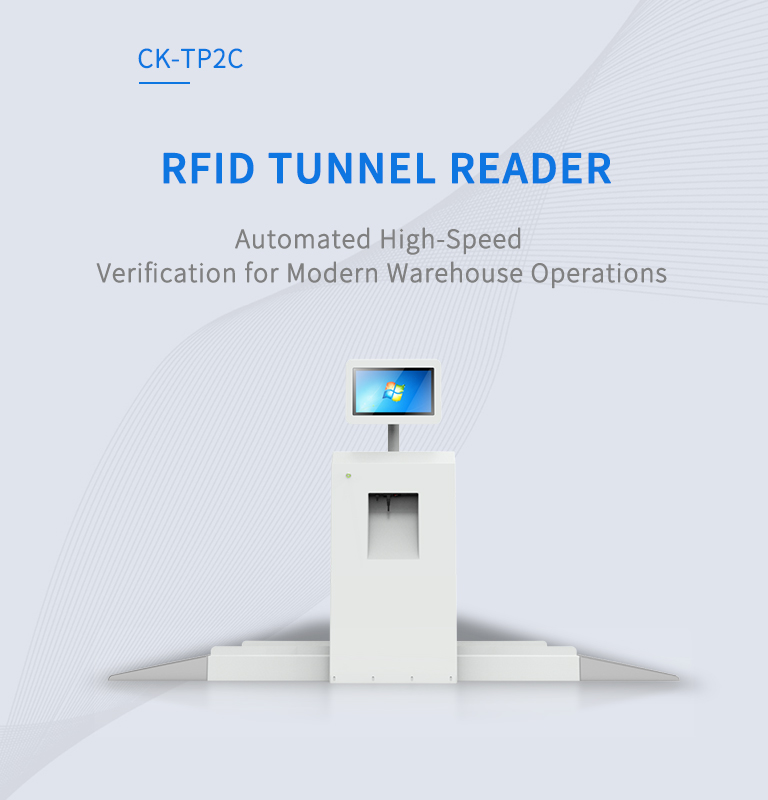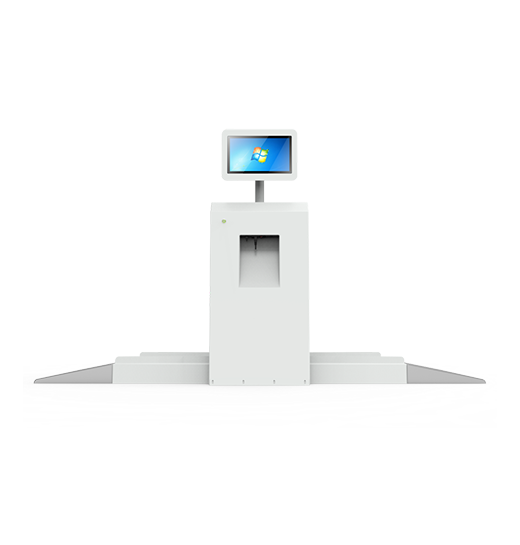Submit your request to us
We will contact you as soon as possible.
All RFID Product

CK-TP2C
RFID TUNNEL READER
Automated High-Speed Verification for Modern Warehouse Operations
✔️ 400+ Items Identification in 3 Seconds
✔️ 4-Antenna Array with 11dBi Narrow Beam
✔️ PLC-Controlled Conveyor System

PRECISION SCAN. AUTOMATED FLOW.
The CK-TP2C RFID Tunnel Reader is an advanced automated verification system engineered for modern logistics centers. Utilizing a sophisticated 4-antenna UHF RFID array and PLC-controlled conveyor system, it delivers unmatched efficiency in inventory management. The device automatically processes up to 400 items within 3 seconds through its infrared-activated tunnel system, while the 14-inch touchscreen provides real-time data validation and exception alerts. With support for both Windows and Android systems, it seamlessly integrates into existing warehouse workflows, significantly reducing operational costs while ensuring 99.9% inventory accuracy.
Ideal for distribution centers, spare parts warehouses, book distribution stations, and medical supply warehouses requiring high-volume inventory verification and shipment accuracy validation.
* Product performance is based on testing in a controlled environment. Depending on the environment, your results may vary.
Submit your requirements and valid contact details – Our engineers will deliver a custom solution within 24 hours.
The narrow beam antenna technology represents a significant advancement in RFID reading precision through three key mechanisms:
The implementation of industrial-grade Programmable Logic Controller (PLC) technology provides superior reliability and control in three critical areas:
The system maintains consistent performance through intelligent adaptive technologies and sophisticated signal processing:
3. Multi-Antenna Sequencing and Signal Analysis:The four antennas are activated in a specific, rapid sequence rather than simultaneously. This sequential activation, combined with advanced signal processing, allows the system to differentiate between tags that might be shielded or poorly oriented relative to a single antenna. The software analyzes the signal strength and read patterns from each antenna to construct a complete picture of the tagged items present, compensating for variations in orientation and density.
1. Dynamic Power Adjustment and Frequency Agility:The RFID reader employs adaptive algorithms that automatically adjust transmission power based on the real-time density of tags detected. In high-density scenarios (e.g., a box full of tagged items), the power is optimized to prevent reader collision and ensure each tag response is distinguished clearly. Additionally, the system utilizes frequency hopping across the 840-960MHz band to overcome null spots and multipath interference.
2. Advanced Anti-Collision Algorithms:The reader leverages sophisticated anti-collision protocols (based on ISO 18000-6C) to efficiently manage situations where dozens of tags respond simultaneously. These algorithms use time-slotted responses and sophisticated signal decoding to isolate individual tag signals, ensuring accurate counting even when tags are densely packed and in various orientations.
Cykeo RFID solutions empower cross-industry operations, delivering precision tracking for supply chain optimization, industrial IoT deployments, and mission-critical asset management across logistics, healthcare, aviation, smart manufacturing, energy infrastructure, and security systems.
